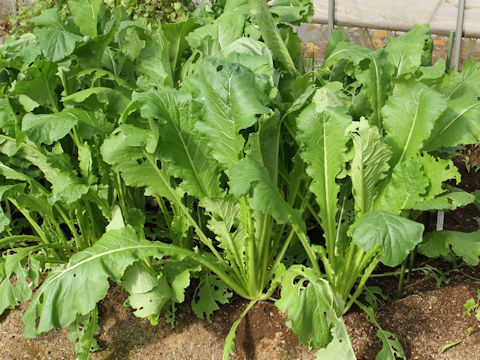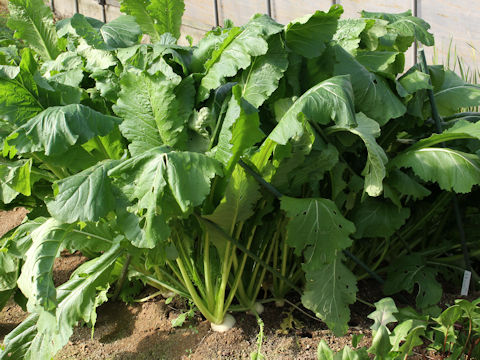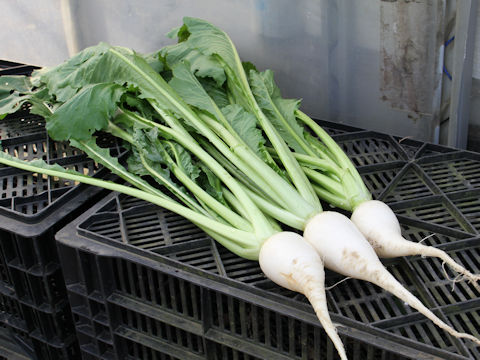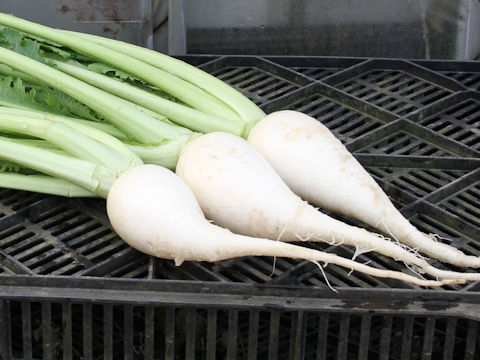|
|
|
|
[Index]
[Back] |
    |
|
|
|
京都市北区上賀茂地区で作られてきた京都の伝統野菜です。安土桃山時代に賀茂神社の社家(しゃけ)の間で栽培されたのが発祥とされています。明治維新以降には一般にも普及しはじめました。葉は肉厚で大きく、根は短い円錐形で、長さは20センチほどになります。繊維が硬いため漬物にされ、根と葉が酸茎(すぐき)漬けになります。別名で「かもな(賀茂菜)」や「やしきな(屋敷菜)」、「ごしょな(御所菜)」とも呼ばれます。 |
|
|
アブラナ科アブラナ属の一年草または二年草で、学名は Brassica rapa var. neosuguki。英名はありません。 |
|
|
The "Suguki-na" (Brassica rapa var. neosuguki) belongs to Brassiaceae (the Mustard family). It is an annual or a biennial herb that is a traditional Kyoto vegetable that has been grown in the Kamigamo area of Kyoto's Kita Ward. It is said to have originated in the Azuchi-Momoyama period (1568-1600), when it was cultivated by the shrine families of Kamo Shrine. After the Meiji Restoration, it began to spread among the general public. The leaves are thick and large, and the roots are short and conical, about 20 cm long. Because the fibers are tough, it is pickled, and the roots and leaves are pickled in "Suguki-zuke". |
|
|
[上] 千葉県香取市大角にて、2016年11月16日撮影。 [中1] 同上にて、2016年12月13日撮影。 [中2・下] 同上にて、2016年12月19日撮影。 |
|
|
|
Shu Suehiro |